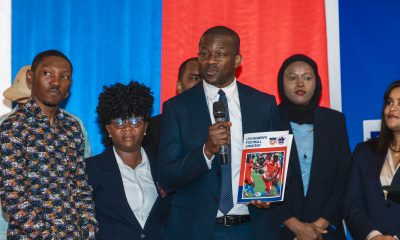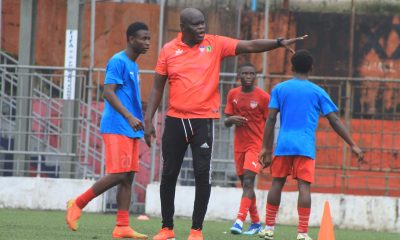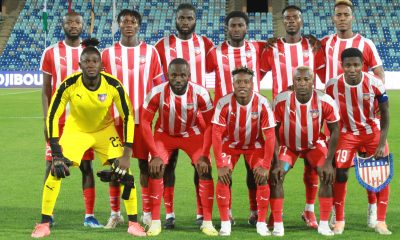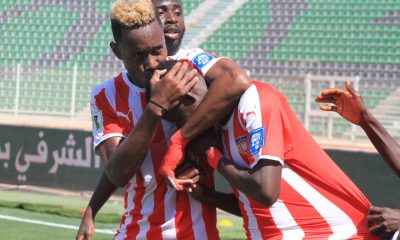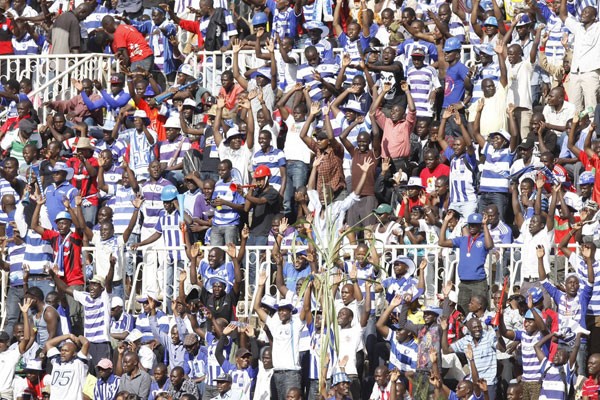
As Harambee Stars prepares for crucial 2019 Africa Cup of Nations qualifier against Ghana in September, in which a likely loss may put qualification perilously in the balance, it is indeed time to take a look at how the team can turn the tide, climb the world rankings and be a regular participant in big tournaments in football world.
It is fairly obvious that there needs to be a huge overhaul within the entire Kenya footballing system which has since been in tatters since the team last participation in the African football showpiece 14 years ago.
A lot has been said of what ails the widely supported game but what’s clear is that football management in Kenya has taken a path which can only be described as worrying.
One may say that with the coming of the new office two years ago headed by Nick Mwendwa has tried to improve the situation but the multiple embarrassments witnessed, every true football fan and pundit will agree that something has to be done.
There are many aspects that need to run as a synergistic whole in order for our football engine to run efficiently.
Failure to host the 2018African Nations Championship (CHAN) and pulling out of SuperSport from Kenya league last year has been some of backward steps that has been witnessed recently.
The loss of 2018 CHAN hosting rights affected Kenya’s national economy, the football development agenda, the country’s hospitality industry and even national morale at a time when confidence was badly needed.
Painful exit of SuperSport was a big loss of what was a perfect opportunity of continued elevation of the brand of the national football team, the Harambee Stars.
The two events are recent signs of a rock path, for the most followed game in the country, to the deathbed if the administrators fail to construct a new blueprint for success that will give football fans expectations of a new born football landscape to boot.
One of the key points football administrators must look at is emphasis on grass-roots development and youth structures. Football talent must be nurtured from a young age like they do in Portugal as trying to coach an 18-year-old into the next Ronaldo is just not going to work.
Specialised skills such as positional awareness, technique, ball retention, ball control, game pace, what do when possession is lost and use of the ball in tight spaces are best taught from a child’s initial school years onward.
Also, youngsters must be taught to improvise and think ‘on their feet’. The national coach must not waste time teaching a striker how to ‘finish’ for example and, must only focus on overall strategy.
Schools, both private and public, as well as football clubs play a vital role here and. Team values and discipline must also be taught young though they are systems in place already but it is obviously not nearly enough.
Another issue that needs more emphasis is creation of a national ‘playing style’ which must be implemented, followed and standardized across all age groups, leagues, academies and clubs.
Even though it is a different sport, the All Blacks attacking style is yet another example of how all tiers, teams and players follow one pattern from youth levels to professional. The Italians are known for their defensive capabilities, what should Harambee Stars be known for?
Administration has been a key hindrance to the improvement of the game and its improvement this starts with the highest body Football Kenya Federation (FKF) down to the Kenyan Premier League (KPL), lower leagues and local provincial structures.
Proper regulations, licensing, procedures and standards must be adhered to and the right people employed to do the job with cronyism and nepotism rooted out. The constant rift between the KPL and FKF about team’s participation in the league and sponsorship. Corruption issues and financial irregularities must also be tackled.
For the growth again it should be remembered that private schools across the nation have produced world class individuals in codes such as cricket, rugby and swimming. Soccer is just not a priority. If such schools with international standard facilities take soccer seriously, we will be producing the next Messi in no time.
Establishment of high performance centres, football academies and specialised technology driven training centres in all 47 counties:
These must be run by qualified individuals. Artificial pitches must be built across the country, particularly rural areas which must be in line with international standards.
Investing funds into the development of licenced coaches, coaching systems, training programmes and talent scouts, in order to find talent: This must involve outsourcing of international advisor’s, professional analysis services and proven coaches. This will take care of technical inefficiencies in our football as well as tactics and tactical awareness issues.
Rope in specialist consultants for specific functions such as a world renowned goalkeeper to mould young shot stoppers instead of the head coach doing this himself. Scouts must cover every inch of the country.
A scientific approach to the game in order to enhance physical and mental aspects must be covered, to improve performance. This should focus on aspects such as correct diet, nutrition, gyming and training methods in line with the highest standards.
Psychological aspects such as developing a player’s emotional intelligence must be included, with mental toughness inculcated here too. Individual programmes must be utilised to enhance focus and laser in on each player’s strengths and weaknesses.
A greater emphasis on statistical analysis of each player and each match must be taken into consideration. Again, this is why the All Blacks are always a step ahead. Being innovative in this approach and also conducting tons of research is vital.
A review on the foreign quota in the Kenyan Premier League also needs to be looked at. With very few of our players enjoying the luxury of European football, the local league remains the main feeder for the national team. Also, local teams need to do well in the Confederations Cup and Champions League.
Communication and continuity between the various structures is important. In this case proper communication between the KPL, NSL, second division, regional league and local football association leagues is paramount.
Junior teams (under 17, under 20 and under 23), must have continuity in a sense that if the coach of the under 20 team leaves, the assistant coach takes over as head coach and the under 17 head coach takes his place as assistant under 20 coach.
This system is the best way to manage both coaching as well as player talent properly, all the way to the top and get the right players into the national youth teams and eventually Harambee Stars and workshops will help here as well.
Incentives, scholarships and bursaries is another aspect that will allow young talent to flourish and encourage them to pursue their footballing dreams whilst also taking care of their academic needs. Funds must be set aside for this and it will help disadvantaged and poor athletes.
International experience for local players plying their trade in competitions such as the Champions League against the world’s best, provides invaluable experience that cannot be bought and goes a long way to closing the gap in terms of playing quality and increasing our own standards. Agents are vital here but the only way for players to attain such contracts is to perform internationally and get recognised.
With a little bit of hard work every football follower in the country will be confident that we can become a world super power again, as we were when we were during the reigns of Coach Reinhard Fabisch.
The funds are there and our local league is rich enough. It is the most popular sporting code in the country and talent will always be surfacing.
We need to stop being lazy, celebrating mediocrity and having the wrong administrators running the game.
Spain took almost 100 years to win a World Cup so surely we do have some hope left.
Government, with a special effort form the sports minister, need to have a solid and amicable relationship with the national football body and both have to be on the same page with one common goal.
Implementing all of the above together is the only way that positive change can be ignited and indeed sustained.

